Currently, the development of renewable energy has become a global consensus, in which solar photovoltaic production is an important direction of energy transformation. According to the International Energy Agency (IEA), by 2050, when the world reaches net zero emissions, nearly 90% of electricity production will come from renewable energy, of which solar and wind energy will account for nearly 70%.
China is currently the world leader in solar power. Data from the China Photovoltaic Industry Association shows that in 2013, the country's newly installed capacity was 10.95 GW (Gigawatts), surpassing Germany for the first time to become the world's largest PV market and has maintained this growth rate since. In 2022, this figure was 87.41 GW, an increase of 59.3% year-on-year, making China the world's largest newly installed PV capacity for 10 consecutive years.
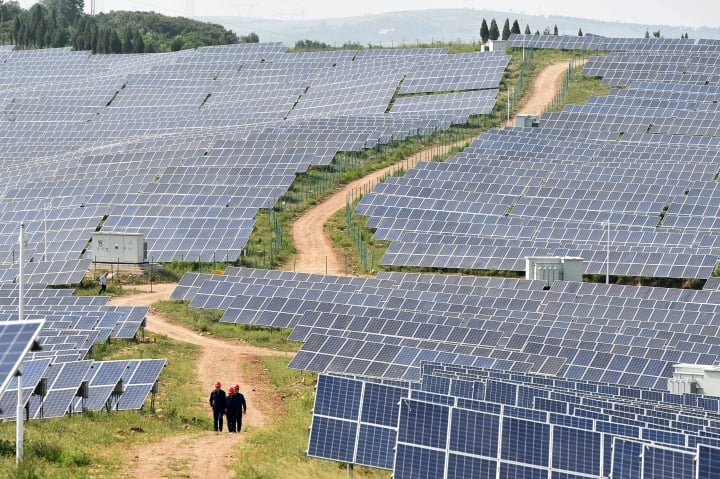
Solar panels at a solar power plant in Henan province, China. (Photo: Reuters)
Currently, China continues to invest in building large-scale solar and wind power plants, but focuses on multi-functional integrated plants to optimize the clean energy generated.
Lin Boqiang, director of the China Center for Energy Economics Research at Xiamen University, told the Global Times that the integrated approach to land use helps stakeholders generate more revenue and is strongly promoted by multiple markets at the same time.
Tidal Integrated Solar Power Plant
China's first hybrid power plant that uses both solar and tidal energy to generate electricity went into full operation in June 2022 in Wenling city, east China's Zhejiang province.
The plant is built on a plot of land covering an area of over 133 hectares with 185,000 photovoltaic modules installed. The annual electricity output reaches over 100 million kWh, meeting the annual electricity demand of about 30,000 urban households.
The project marks the country's latest approach to the integrated exploitation of two green energy sources for clean electricity production.
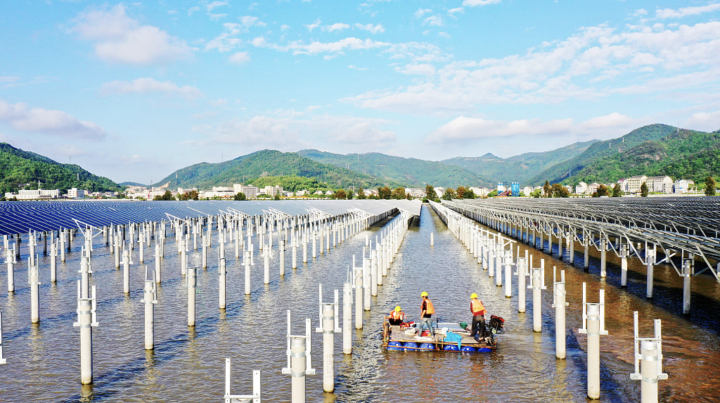
China's first hybrid photovoltaic power plant using both solar and tidal energy in Wenling city, east China's Zhejiang province. (Photo: CFP)
With the characteristic of solar energy supply being intermittent and unavailable, at night when there is no sunlight, the power source will be unstable when encountering stormy weather..., thus making it difficult to reach maximum exploitation capacity. To solve this problem, experts have researched and proposed a model of the operating and regulating system between hydropower and solar power to create a safe and stable power source.
Thus, this 100 MW (megawatt) installed capacity plant can provide energy even at night by taking advantage of the Moon's gravity to create tides in the oceans.
“The project has created a new model of comprehensive utilization of new energy by combining the generation of electricity from both solar and tidal energy,” Feng Shuchen, executive vice president of China Energy Group, told China Media Group (CMG).
Such integrated projects will also contribute to promoting innovation and development efficiency to accelerate energy structural reform and upgrade China's industry, he added.
Compared with a thermal power plant of the same size, the hybrid power plant will save about 28,716 tons of standard coal and reduce 76,638 tons of CO2 emissions per year.
Solar power plant integrated with wind turbine
In November 2022, China put into operation the world's first offshore floating solar power plant. The project was implemented by the State Power Investment Corporation of China (SPIC) and applied technology from Ocean Sun - a Norwegian group pioneering in solar energy solutions.
The notable point of the project is that this offshore floating photovoltaic plant is also integrated with a wind turbine system, making it the first integrated photovoltaic and wind turbine plant.
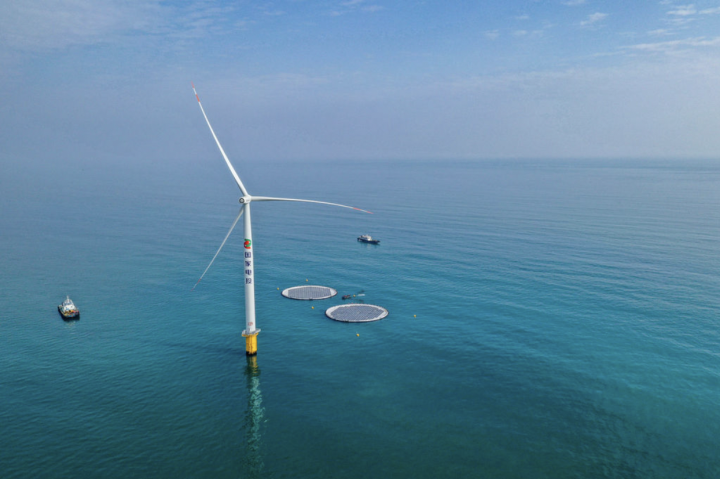
Floating solar technology combined with offshore wind turbines in China. (Photo: Ocean Sun)
The project will unlock the potential of offshore hybrid power plants with higher efficiency and lower levelized cost of energy, SPIC said in a statement.
In other places, this type of integrated plant model is gradually taking shape. Officials in the city of Chaozhou in Guangdong have also revealed plans for a 43.3 GW offshore wind farm in the Taiwan Strait.
“This is a major milestone for Ocean Sun and for the floating solar industry. The success of the SPIC-funded project and the application of Ocean Sun’s solution has shown that the goal of reducing greenhouse gas emissions is achievable with cross-border development. We are delighted to continue our close cooperation with SPIC through the Ocean Sun team based in China,” said Ocean Sun CEO Borge Bjorneklett.
Solar power plant integrated with salt fields
Located on a 1,333.33-hectare (13.3-square-kilometer) salt field in Tianjin, China, this three-in-one solar power plant uses a plot of land the size of 1,868 standard soccer fields for three functions at once: generating energy from solar panels, producing salt from sunlight, and cultivating aquatic products.
The Tianjin solar power plant is estimated to generate about 1.5 billion kWh of clean electricity each year, meeting the needs of 1.5 million households. On July 8, the plant marked a new step forward when it was connected to the city's power grid.
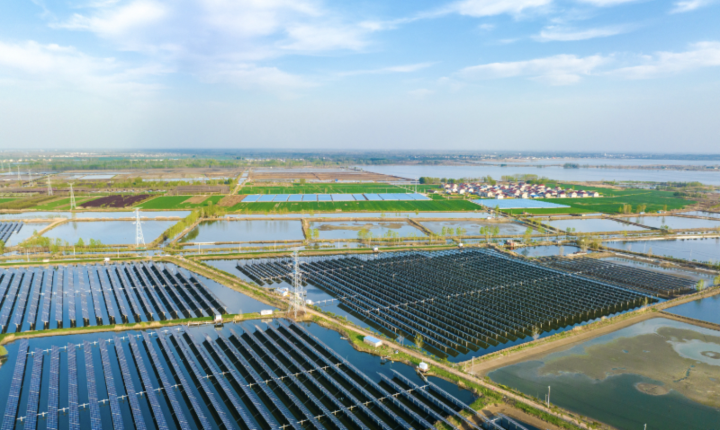
Solar panels are installed on a modern fishery industrial park in Jiangsu Province, China, making full use of wasteland, riverbanks, lakes and rooftops to build photovoltaic power generation projects. (Photo: Global Times)
The distance between the solar panels here is extended to 14 meters - nearly double the normal distance, along with the design of the panels tilted at 17 degrees - instead of 40 degrees like in other solar power plants, to maximize the amount of sunlight shining in to serve the salt making process.
Another difference that makes this world's largest integrated project successful is that the solar panels are designed to absorb energy from both the front and back sides, increasing power generation efficiency by 5-7%.
According to a report released by the project team, when operating at full capacity, the project is expected to save 500,000 tons of standard coal per year and reduce 1.25 million tons of CO2 emissions.
Solar power plant against desertification
Located in the Kubuqi Desert in northern China's Inner Mongolia Autonomous Region, this integrated photovoltaic power station for combating desertification is a project jointly developed by China Three Gorges Corporation and Inner Mongolia Energy Group. Construction has been underway since late December 2022.
The desert power plant project is part of China's efforts to promote a green transition and reduce its dependence on natural gas.
When operational, the green energy facility is expected to have an installed capacity of up to 16 million kW, and can transmit about 40 billion kWh of electricity to the capital areas of Beijing, Tianjin, and Hebei each year. The use of wind and solar energy will replace about 6 million tons of coal and reduce 16 million tons of CO2 emissions into the environment annually.
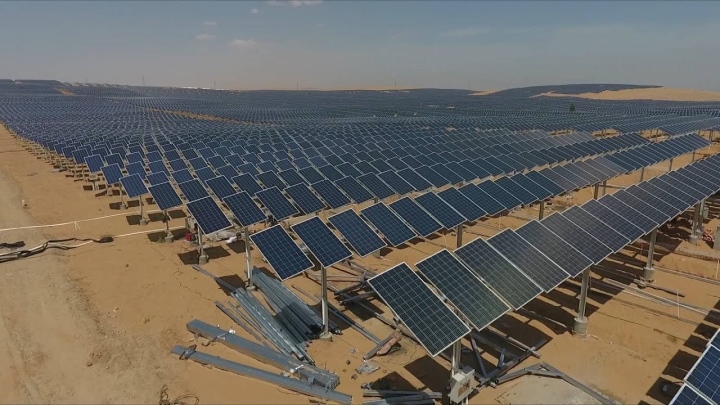
Solar panels in the Kubuqi Desert, China. (Photo: New China TV)
Another PV plant with a similar integrated model is located in the Tala Desert, which has a terrain of 98.5% sandy soil and rich solar energy resources. Taking advantage of the longer daylight hours in the desert terrain (nearly 3,000 hours/year), the plant is capable of generating more than 20,000 MW of electricity and an output of 32.9 billion kWh/year.
To complete the project in nearly 10 years, the construction team overcame many difficult problems related to climate and terrain such as sandstorms and plateau reactions at an altitude of nearly 3,000 m above sea level, researching a model for building large-scale solar power projects, focusing and effectively exploiting and converting solar panels, creating a green, environmentally friendly cycle.
Up to now, with a total area of 345 km2, this solar power project in the desert has made an important contribution to protecting and improving local natural conditions, by reducing wind speed and sandstorms by 41.2%, increasing soil humidity by 32% at a depth of 20 cm, and covering the land with plants that are effective against sandstorms, also contributing to reducing the desertification area by more than 100 km2.
Further afield, in the Tengger Desert in northwest China's Ningxia Autonomous Region, construction is also underway on a world-class photovoltaic facility that will generate around 5.78 billion kWh of electricity per year when completed.
In addition to the typical integrated factories mentioned above, many other localities in China have also been selected to test the combined industrial and mining model focusing on solar energy.
In southern China, solar panels are even installed above fish ponds or rice fields to save space and harness energy without hindering aquaculture or agriculture.
Thus, it can be seen that China's photovoltaic industry continues to maintain a high-speed growth trend. In the first quarter of this year alone, the country's newly installed capacity reached 33GW, equivalent to the first half of last year.
It is estimated that by 2023, China will reach a solar power generation capacity of about 490 GW, surpassing hydropower for the first time, becoming the number one non-fossil energy source in the country.
Speaking at the Zhongguancun Forum held in Beijing at the end of May, Professor Martin Green of the University of New South Wales, Australia, known as the “father of solar energy” in the world, predicted that for at least the next five years, the world's photovoltaic industry will have to depend on China.
Phuong Thao (Synthesis)
Useful
Emotion
Creative
Unique
Wrath
Source










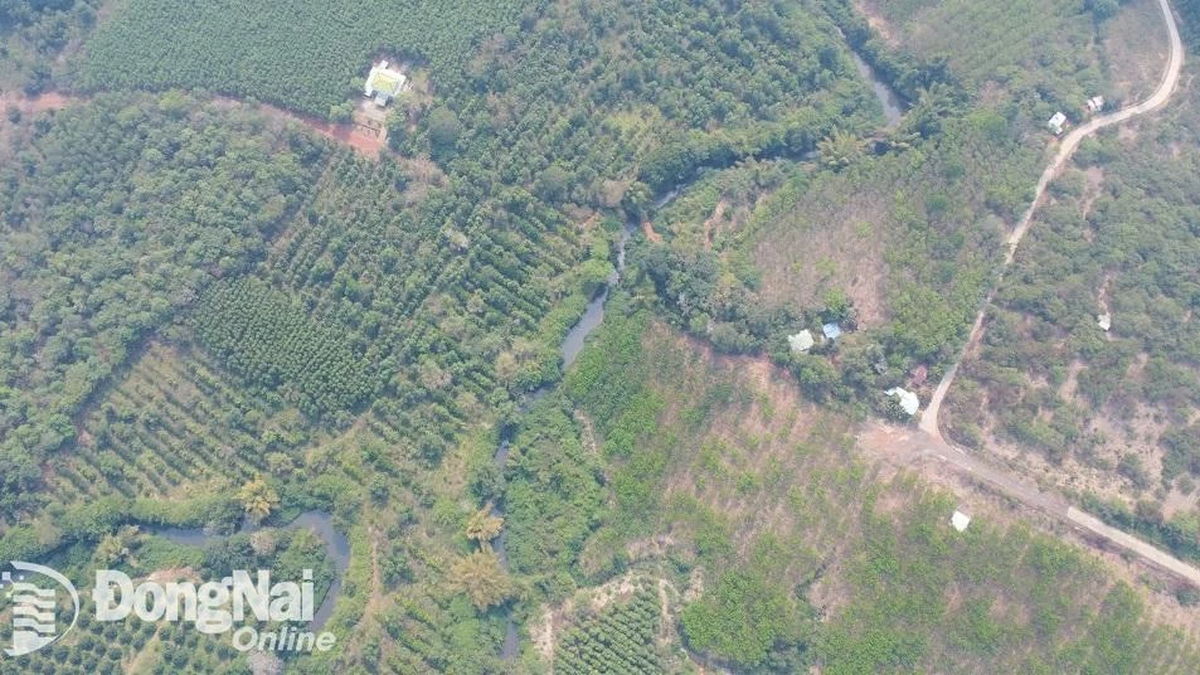
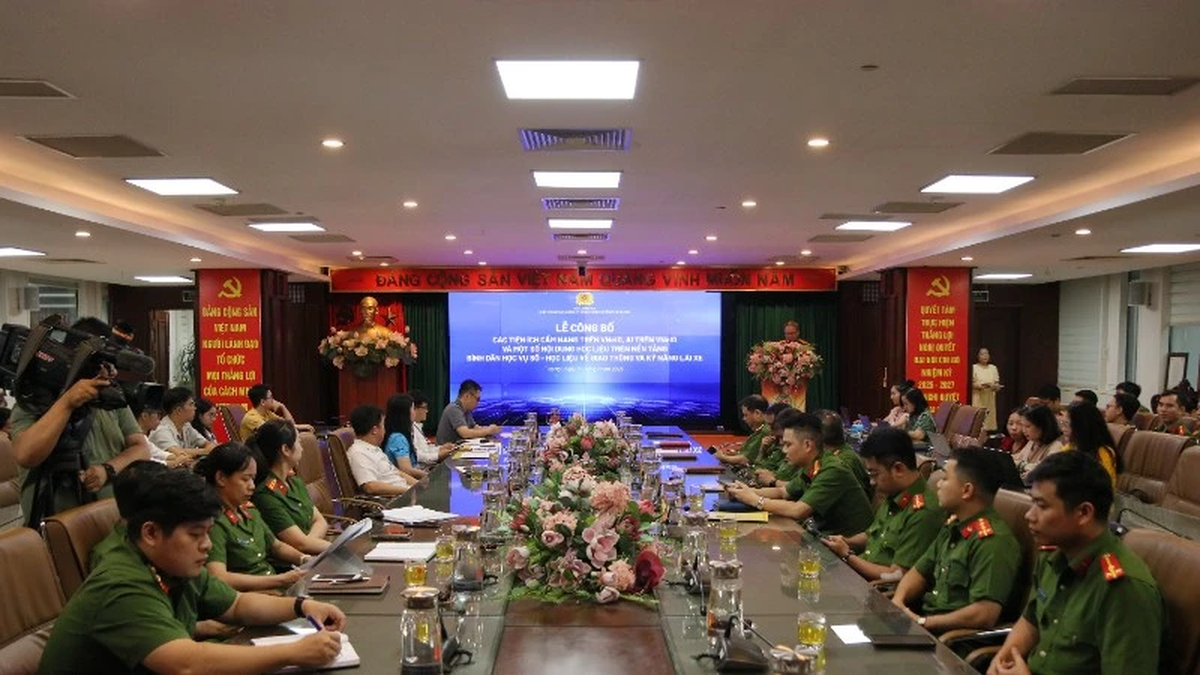












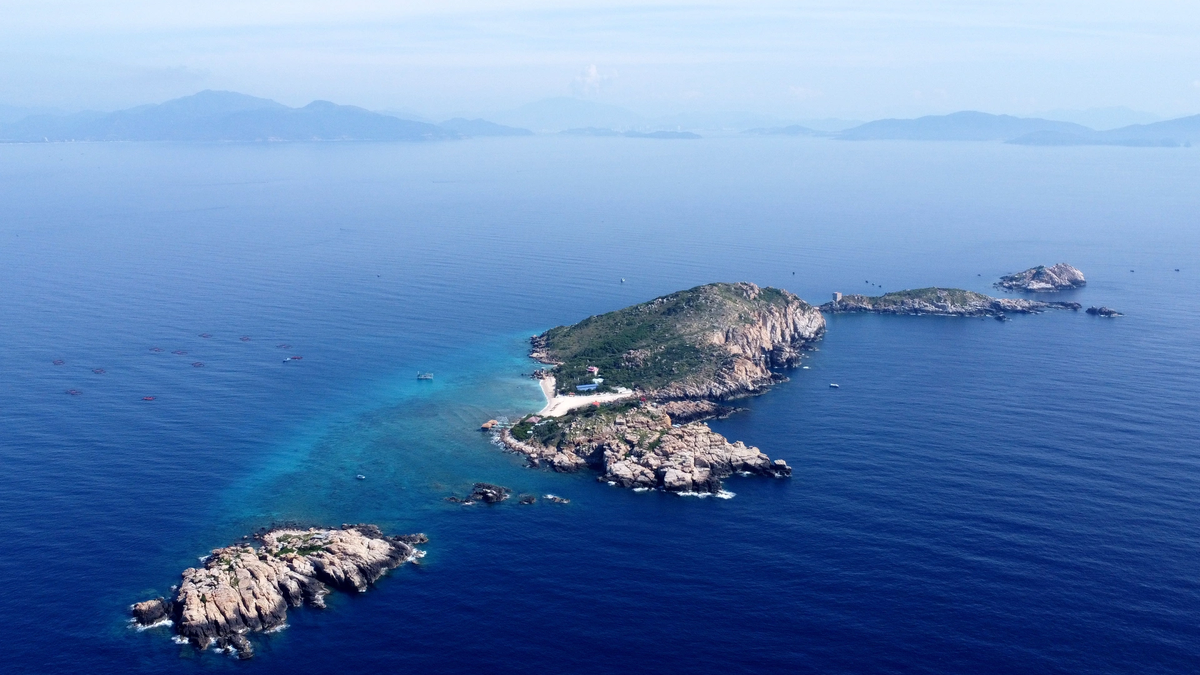




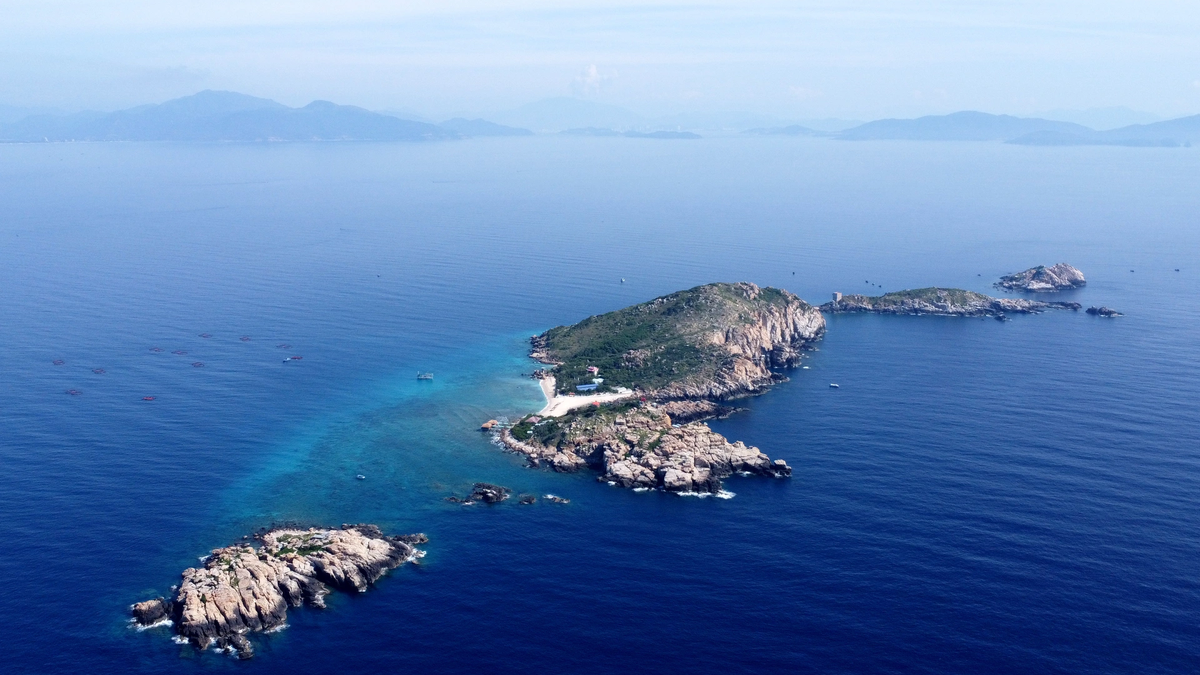











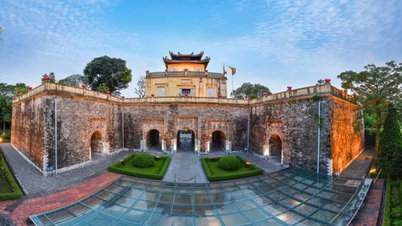









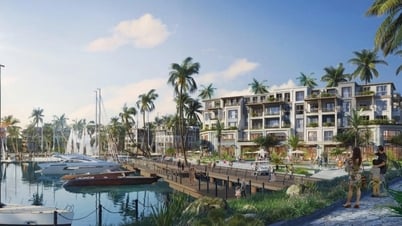




















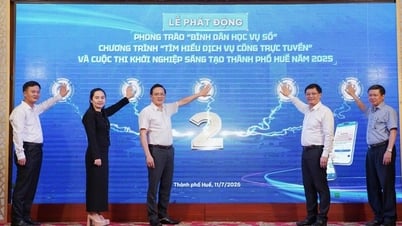
























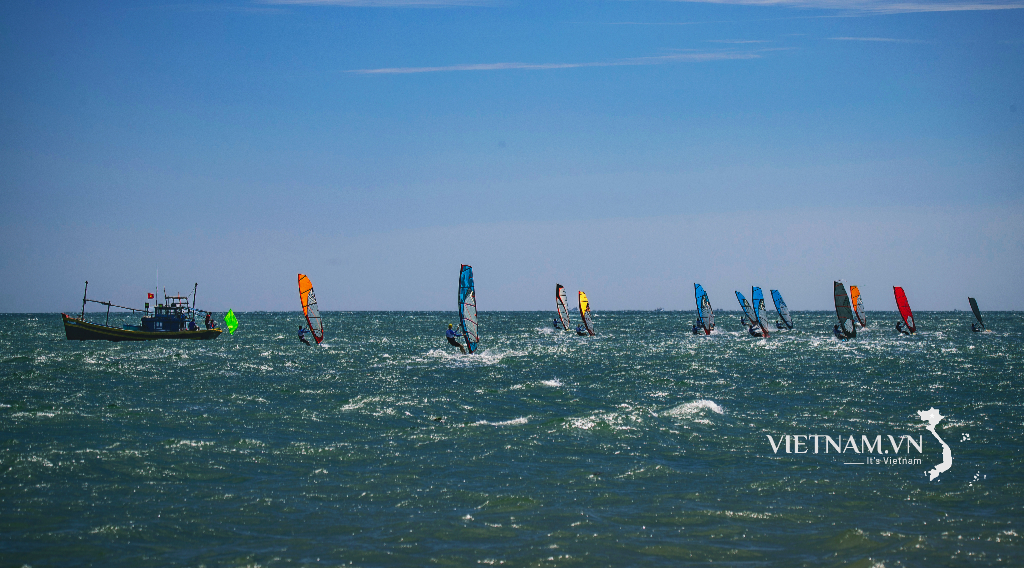



Comment (0)